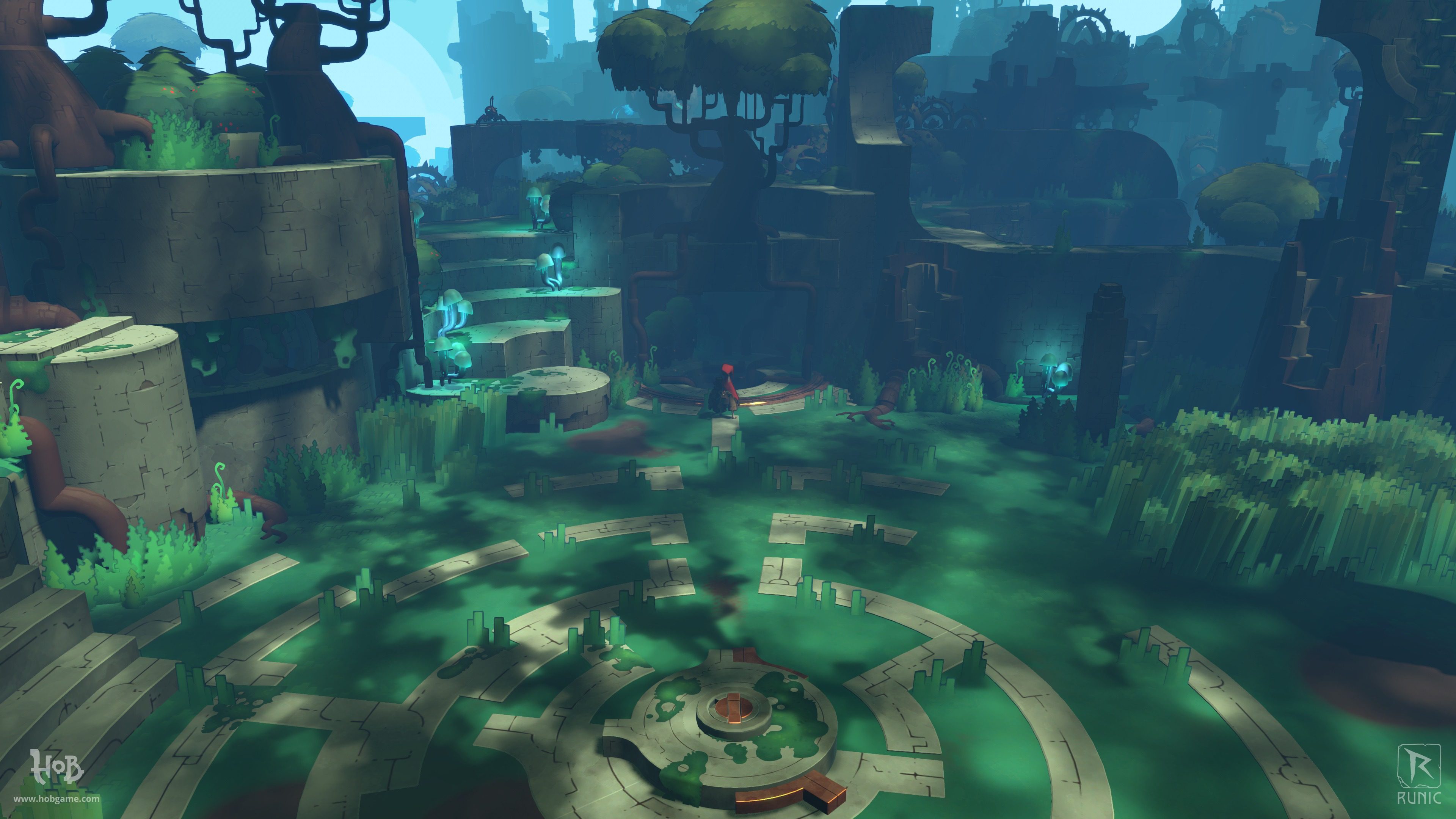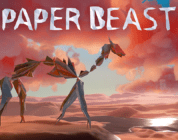An ethereal world defined by its ancient technology, Hob is the new action and exploration-heavy title from Runic Games. Across a kaleidoscope of landscapes that can morph with the pull of a lever, players will guide a small character through subterranean power stations and monolithic towers in a bid to restore this world to its normal state. While the distinct lack of text or dialogue might have some players off to a slow start in figuring out how to navigate the map, that is such a small hurdle to overcome and does not lessen the experience.
Hob unleashes dramatic tension at the start when the protagonist suffers a near-fatal infection from a swatch of purple, bubbly goo wreaking havoc on the world. The scene plays out in an unexpected and shocking way, but a gentle-giant robot comes to the rescue, effectively creating an immediate bond between the two characters. Without this, the not clearly defined journey would have less meaning, and the moments in which you interact with the robot less emotional weight.
The robot acts as a guide of sorts, cluing the player into things around the world that need to be fixed. As previously mentioned, Hob is devoid of text and dialogue that would otherwise concretely spell out the story, but this is part of the game’s charm. It makes perfect sense that, after waking up in a strange land, the protagonist wouldn’t speak robot, but through a series of gestures and carefully timed camera pans and zooms, it’s not hard for the player to understand what to do or where to go for the next objective.
That’s one of the strongest points of Hob: visual communication. The game succinctly communicates objectives using camera angles. When you climb up at the right spot on a tree or a wall, for example, a haunting melody will play as the camera pans over to focus on where you need to go next. This objective will also appear on the map, which grows as new areas are unlocked. Hob is also strong in the way it subtly, yet easily leads the player from one point to the next. Every platform and every ladder is designed to funnel the player directly or nearly directly toward a goal—yet the game doesn’t make it feel like hand-holding.
Besides the obvious visual and musical differences, each area has its own twist; there are new enemies, new variations on platforms and puzzles. The massive amount of visual variety in Hob makes every moment feel like a grand adventure. So, even though the game is designed to be an easy playthrough, rather than something that tests your dexterity to the max, it still provides a rich experience filled with wonder and awe.
Speaking of wonder and awe, Hob’s sound and music are something to pay close attention to. Each area of the world has its own tunes to match its personality, but composed in such a way that—even though the sound effects and music would seem to juxtapose each other—those sounds were unquestionably born to mesh together. In the desert area, for example, the endless electrical zapping and thunderbolts piercing the earth feet away from a huddle of cacti fills the space between short, but sweet blues rifts—my absolute favorite part of the music. These notes make a subtle entrance, yet offer the perfect amount of calm among the chaos.
However, with so much visual and auditory depth, Hob was a bit of let down in one aspect: controls. Being that the game’s camera angles would auto-pan from three-quarter top-down views to side-views, this made playing the game with a keyboard unnecessarily difficult. Using the WASD layout didn’t have enough fine precision to navigate atop curved platforms or maneuver onto rotating spaces. For me, a die-hard PC gamer, I could not play the game this way. Fortunately, the controller support on Steam made it easy for me to connect an Xbox One controller to my PC, instantly making the game playable. If you are thinking about getting Hob for PC, have a controller at the ready.
Using a controller also makes engaging in combat much easier and more fun, despite its simplicity in the earlier stages of the game; there’s a hack-n-slash feel, with the ability to dodge and punch. By collecting tokens (I’m not sure what they are actually called, but “tokens” sound better than “round green things”), players can save up enough to buy new abilities that will come in handy in later stages of the game, but these abilities need to be discovered or unlocked first. On occasion, you’ll randomly come across an ability in the wild that you do not need to purchase. Overall, there’s a great repertoire of combat abilities and other upgrades.
Hob is a rare gem. It has mass appeal, regardless of preferred genre or style. It’d be hard to come out of the experience of playing and not loving at least one thing about the game. I didn’t have a full understanding of the conflict of this world at the beginning, yet the sheer beauty of it compelled me forward. I didn’t understand who the protagonist was or why the robot friend was so gallant, but it sacrificed a piece of itself to save the protagonist—that’s enough of a reason to finish the journey and help put the world back in order.
For more information on Hob, check out the official website. A copy of the game was provided by the developer.







